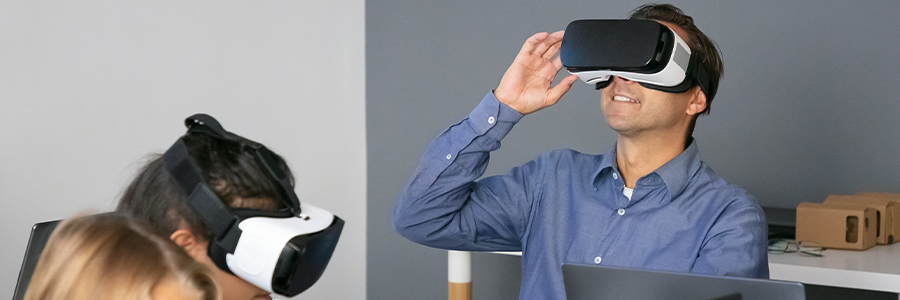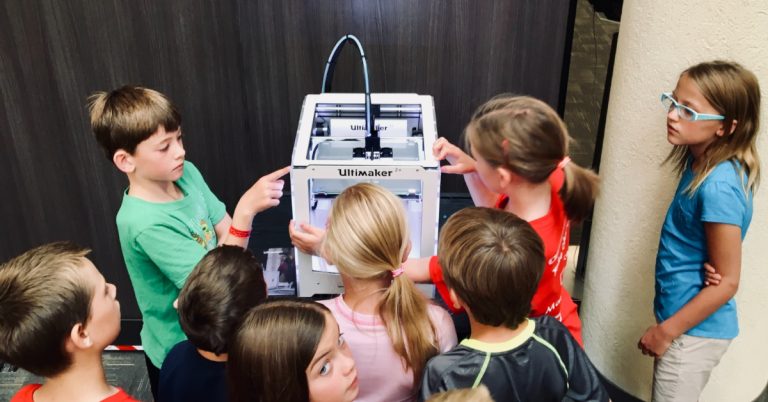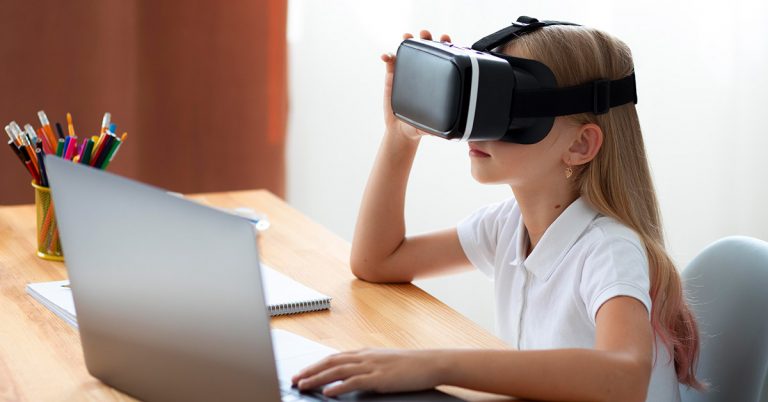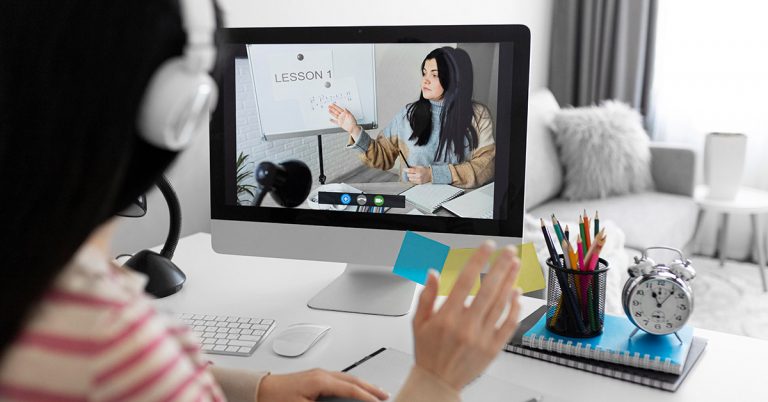Moreover, it has been proven that the use of modern technologies boosts children’s interest in the curriculum. The goal of education is to provide students with the necessary knowledge that they will be able to apply in everyday life, and in their future careers. For this reason, teaching must follow modern trends so that educational institutions would be able to provide students with applicable and current knowledge.
To achieve this goal, it is necessary to modernize schools and increase reliance on technology in education. Teachers are faced with great challenges – they need to introduce technology in education in a way that will improve their teaching practice and methods.
Certain requirements must be met in order to successfully introduce technology in education:
- Teacher education
- Curriculum modernization
- Equipping the classroom
- Providing equipment for each student
It is clear from the outset that this is a major undertaking that requires significant investments in teacher education, as well as resources needed to provide adequate equipment. It is a long-term process that is already widely implemented in schools across the US. The idea is that students should rely on the computer, phone, and other gadgets as much as possible during the work process, because that way, they will be able to achieve numerous educational advantages.
Technology serving education
Technology in education has brought a genuine revolution in our approach to learning. Every age and stage of technological development has introduced certain changes in the way knowledge is transferred. And just like we used to use gramophones and projectors, nowadays, we use computers, mobile phones, VR sets, robots and other gadgets. Education in the 21st century is inextricably linked to technological advances, which is why most institutions are working hard on modernizing their schools.
There are various methods that can enhance one’s educational experience and make it easier to master the teaching material:
- Distance learning – learning from home is a widely accepted education method. Successful work only requires a smartphone, laptop or a computer.
- Multimedia classrooms – all better equipped schools nowadays allow their students to follow lectures via laptops, and teachers to play adequate audio/video materials.
- Gamification – gaming industry has developed methods to maintain their players’ attention. One of the ways is the achievements system where a user needs to fulfill various predefined goals, after which they get a reward. Translated to the language of education, it means that the teaching material can be split into several smaller chunks, where children will get tasks that will push them to work harder to win a reward. Competing and creating a ‘best players’ list is an excellent method that children are already familiar with from the video games they play every day.
- Using AR and VR technologies – it is almost impossible to find a child who has never played Pokemon GO, a game based on augmented reality. While they were hunting Pokemons around their hometown, players walked around learning about their environment, without even knowing it. Why not use this method in education to help students master the material through virtual and modified reality?
These are just some of the methods made possible by technology in education, which open doors to all the benefits of modern education.
Benefits of technology in education
It is important to know that technology in education doesn’t have any negative effects on the advantages of traditional education. No robots will ever replace teachers, nor will schools become “learning factories”. On the contrary, the idea is that modern technologies should help additionally improve tried and tested methods, while modernizing the outdated ones. The main goal is primarily student well-being and the best possible academic performance.
To achieve such ambitious goals, intensive modernization and improvement of the education system is being undertaken across the US. Thanks to this modern approach to learning, students are able to acquire 21st-century learning skills, which are the basis of modern education and the foundation of a successful career. Of course, technology in the classroom is primarily a tool in the teachers’ hands to help them guide their students.
It should be noted that lessons presented in a modern way and containing multimedia content boost student interest and maintain their attention. It is clear that it’s much easier to interest students in the teaching material if that material is presented in a familiar and relatable way, and this is now possible, thanks to increasing availability of computers and other technological aids in schools.
Technology in education has improved education in several ways:
1. Increased student engagement
Although some were skeptical about technology, believing it would be just a distraction in teaching, it proved the opposite. Many lectures became more interesting through the use of technology. Students are now more active in class, so instead of passively listening, they actively participate in the lessons.
This is particularly visible in “traditional” subjects where one wouldn’t expect to find technology. Thus, for example, history or art classes are now much more engaging, because students have access to video material, photographs, even video games related to certain lessons. Simply put, children are used to modern technologies, so approaching lessons in this way greatly helps children to master them.
2. Developing children’s individuality
Teachers are nowadays aware that each student is a unique individual with particular needs that demand a special approach to learning. Children are now encouraged to adapt learning to their own needs, using all the advantages of technology. In the past, children used to secretly scribble and scrawl in class, but nowadays, we know that it is useful in many ways.
Children are now encouraged to make sketches or tables and infographics using a digital pen. This way, children can follow the lesson in a way that best suits them, which greatly facilitates the acquisition of new knowledge. In addition, it is easier for teachers to recognize student potential, and plan their lessons accordingly.
3. Easier student progress monitoring
The traditional approach to education involved keeping a class register, and taking short notes about students. This approach has been greatly improved by the introduction of computers, cloud technology and advanced tools that allow teachers to share information with each other. Now, the whole school team can monitor student progress, so as to help each student to reach their full potential.
Recognizing all the benefits of modern technologies, many schools have introduced tools for monitoring student progress. There are various software solutions that do not require many resources. This form of communication in school has been additionally improved during the global COVID-19 pandemic when most schools switched to distance education.
4. Facilitating teacher training
Professional development of teachers has been greatly facilitated by the introduction of modern means of communication. Seminars and courses used to be a great financial expense for schools and teachers. However, when professional development programs became available online, they also became much cheaper, because teachers could attend lectures online and the whole process was much more efficient.
This way, digitalization in education will be accelerated, because more and more teachers will get the opportunity to acquire new knowledge and master the basics of technology in education. Of course, students will benefit the most, because the improved system will produce better-trained teachers who will be able to transfer knowledge in a modern and efficient way.
Finally, schools will produce more mature and capable individuals, ready to implement the knowledge they’ve acquired in practice. However, to achieve this, we need to continuously improve teacher training and technological literacy.
5. Facilitating individual and teamwork
For many, the first association to modern technologies is improved communication. The fact is that children are increasingly present on social media, so why not use this interest of theirs for educational purposes? Thanks to advanced technologies, teachers can guide students to collaborate on projects, simulating teamwork in a modern company. Students can exchange their attitudes and ideas online, through educational platforms, just as they do at home.
Thus, they will solve school tasks in a way that is familiar and comfortable, while at the same time learning teamwork, respect for others, and responsibility. Instead of endless paperwork, everything is now in one place, and it is possible to clearly see how much each individual contributed to the final result. A modern approach to education still prioritizes individual work and the development of each student above everything else.
It is also easier for teachers to work with each student individually. Students can share their works, ask additional questions, etc, while on the other hand, teachers can leave comments, send additional multimedia material, review student students’ papers, etc.
6. Preparing children for future jobs
Modern technologies are not only used to facilitate teaching, but also to help prepare students for their future careers. Regardless of what they want to do after school, the basic computer training, and the knowledge of Microsoft Office suite for example is useful to everyone.
Of course, many professions will focus on the digital environment and the jobs of the future that may not even exist yet. Who could hope 10 years ago that the Internet and social media would have such an important role, and even spawn professions such as community manager or SEO expert? As the future will only bring new technological innovations, children should be prepared for new challenges.
7. Information accessibility facilitates learning
In the past, students had to work hard to get the information they wanted. If they wanted additional information about something, they had to go to a library and leaf through different books. Although reading books has its charms, every student prefers finding the information they need online.
The Internet is an inexhaustible source of information where students can find e-books, scientific papers, old newspapers and magazines, and many other things that can help them solve school assignments. The Internet helps modern students to cover the given topic in a shorter time, and they also learn to solve problems on their own in the best possible way.










